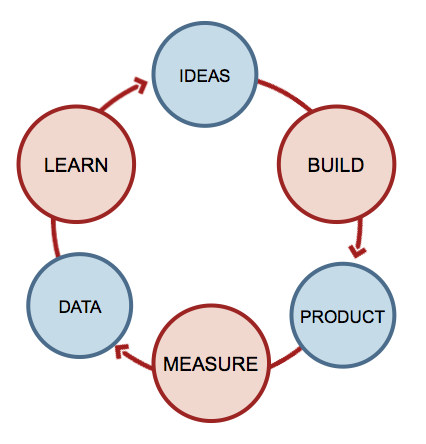In my last post, I painted a picture of the web presence the Impact Sourcing industry needs. There are people starting to think about that now. Here is our perspective on the matter.
It’s all about execution. I urge those involved in this launch to borrow best practices from the world of startup companies. Impact Sourcing needs a website, a brand and a marketing campaign around it. Entrepreneurs often do this faster and more efficiently than traditional, larger businesses.

Lean Startup Methodology
Startup companies follow a roadmap to success with a business model canvas, a minimum viable product or website and iterative development cycles. In other words, they discover failures quickly through experimentation. After each failure, they try a different approach. Some of today’s best business leaders constantly iterate their approach. It delivers results faster. I’d like to see Impact Sourcing (and its associated brand) get off the ground in this way.
It starts from the bottom up. Design an online experience around the audience that will use them. Involve them in the process. Test and iterate. Great websites adapt over time in order to appeal to returning visitors.
As with any creative project, you can try perfecting things forever. Set basic milestones and get your product into the hands of the people who need it as soon as possible. The sooner an Impact Sourcing website is in the wild, the sooner it’ll receive feedback and the sooner it’ll become an effective tool.
This is Impact Sourcing’s minimum viable product: a website that delivers all the necessary functions to brand and market Impact Sourcing. Once launched, re-think the site every month. Examine visitor usage patterns, ask them to provide feedback and tell them what you want to launch next.
An Impact Sourcing brand is strengthened by its website and by how well its marketing campaign connects with target audiences. Connect with Impact Sourcing stakeholders by involving them in the process. That’s where we’ve gotten the most traction. When we reach out to new friends on Twitter or via email, we offer them an opportunity to shape our website.
In my next post, we’ll look at other audiences. For example, how does an Impact Sourcing website attract buyers?
